The classic tale of the Three Little Pigs is a timeless fable about three pigs building houses of straw‚ sticks‚ and bricks to outsmart a hungry Big Bad Wolf․ Available in various PDF formats‚ this story remains a beloved resource for teaching valuable lessons about preparation and consequences․
Origins and Historical Context of the Three Little Pigs
The story of the Three Little Pigs has its roots in traditional European folklore‚ with its modern version gaining popularity in the 19th century․ The tale was first published in the 1840s by James Orchard Halliwell in his collection of nursery rhymes‚ marking its transition from oral tradition to written literature․ Over time‚ the story has evolved‚ influenced by cultural adaptations and interpretations․ Its enduring appeal lies in its universal themes of preparation‚ consequences‚ and survival‚ making it a timeless fable for generations․ The story has been translated into multiple languages and remains a staple in children’s literature‚ offering moral lessons while entertaining readers․ Its historical significance is further highlighted by its ability to adapt to modern formats‚ such as PDF versions‚ ensuring its accessibility and relevance in the digital age․
Why the Story of the Three Little Pigs Remains Popular
The enduring popularity of the Three Little Pigs story stems from its universal themes and engaging narrative․ Its simple yet impactful lessons about diligence‚ laziness‚ and consequence resonate with audiences of all ages․ The story’s relatable characters—the hardworking pigs and the cunning wolf—create a vivid moral framework that is both entertaining and educational․ Additionally‚ its adaptability to various formats‚ such as PDF versions‚ has made it accessible across generations․ The tale’s repetitive structure and memorable dialogue‚ like “Little pigs‚ little pigs‚ let me come in‚” enhance its appeal‚ making it a favorite in classrooms and households․ Its ability to spark critical thinking and creativity further solidifies its place as a beloved story in children’s literature․ The availability of free PDF downloads has also contributed to its widespread popularity‚ ensuring its timeless message continues to inspire young readers․
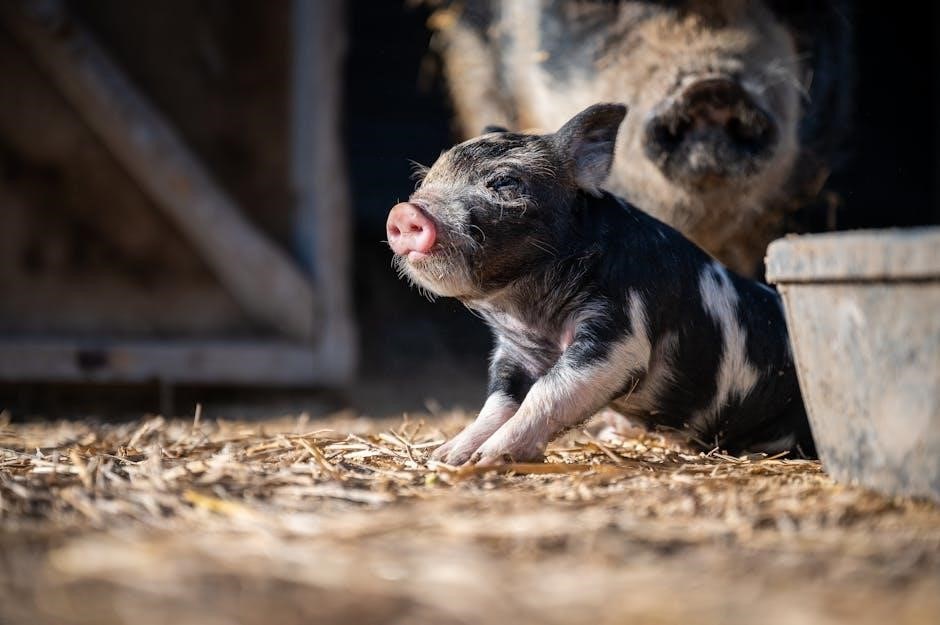
Plot Summary of the Three Little Pigs
Three little pigs leave home to build their futures․ The first two pigs quickly construct houses of straw and sticks‚ while the third builds a sturdy brick house․ A hungry Big Bad Wolf blows down the first two houses but fails to destroy the brick one‚ ensuring the pigs’ safety and the wolf’s defeat․
Detailed Breakdown of the Storyline
The story begins with a mother pig advising her three sons to build their own houses as they venture into the world․ The first pig‚ seeking quick shelter‚ constructs a house of straw․ The second pig‚ slightly more ambitious‚ builds his house with sticks․ Meanwhile‚ the third pig‚ demonstrating foresight‚ gathers bricks to build a sturdy house․ A hungry Big Bad Wolf‚ intent on eating the pigs‚ approaches the first house‚ huffing and puffing to blow it down․ The straw house collapses‚ and the first pig flees to his brother’s stick house․ The wolf repeats his attempt‚ destroying the stick house as well․ The two pigs escape to the brick house‚ where they find safety․ The wolf‚ determined‚ attempts to blow down the brick house but fails․ Defeated‚ the wolf retreats‚ and the pigs live securely in their strong brick home․
The Climactic Ending and Its Significance
The story reaches its peak when the Big Bad Wolf‚ after failing to blow down the brick house‚ attempts to enter through the chimney․ The pigs‚ anticipating this‚ boil a pot of water beneath․ When the wolf falls into the pot‚ he is scalded and flees‚ never to return․ This climactic ending highlights the triumph of preparation and wisdom over greed and laziness․ The brick house‚ built with diligence‚ becomes a symbol of safety and resilience․ The wolf’s defeat serves as a moral lesson‚ emphasizing the consequences of malicious intentions and the rewards of hard work․ The ending reinforces the story’s central theme of prudence and responsibility‚ leaving readers with a lasting impression of the importance of foresight and effort in overcoming adversity․
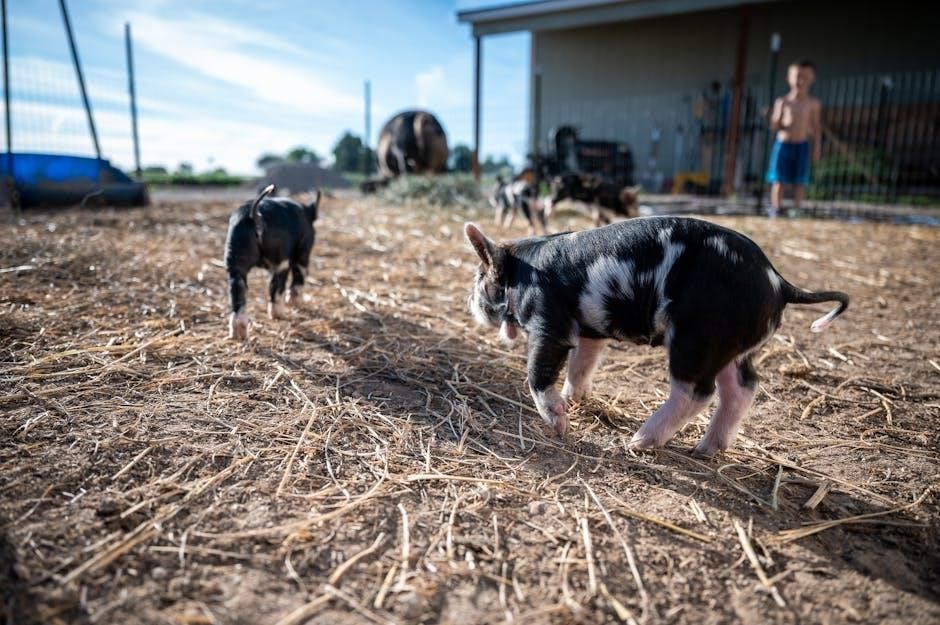
Character Analysis
The three little pigs represent varying degrees of diligence and laziness‚ while the Big Bad Wolf symbolizes greed and cunning․ Their contrasting traits drive the story’s moral lessons․
The Three Little Pigs: Their Personalities and Roles
The three little pigs are distinct in their personalities‚ showcasing different approaches to life․ The first pig is lazy and careless‚ quickly building a straw house for ease․ The second pig is slightly more ambitious but still rushes‚ constructing a stick house․ The third pig‚ however‚ is diligent and responsible‚ building a sturdy brick house․ Their roles highlight the consequences of their choices‚ with the third pig’s preparation saving the day․ These contrasting traits make them relatable and teach valuable lessons about hard work and responsibility․ Their actions drive the story’s moral‚ emphasizing that effort and foresight lead to success‚ while laziness often results in failure․ Together‚ their personalities and roles create a engaging narrative that has captivated readers for generations;
The Big Bad Wolf: Motivations and Symbolism
The Big Bad Wolf is the antagonist whose primary motivation is hunger and a desire to deceive․ He symbolizes greed and cunning‚ using his intelligence to outsmart his prey․ His relentless pursuit of the three little pigs drives the story’s conflict‚ showcasing his determination and lack of empathy․ The wolf’s actions represent the dangers of temptation and the consequences of underestimating others․ His character serves as a cautionary figure‚ teaching children about the importance of vigilance and preparedness․ Through his failed attempts to blow down the brick house‚ the wolf’s defeat symbolizes the triumph of good over evil and the rewards of hard work․ His role in the story is pivotal‚ reinforcing the moral lessons that resonate with readers of all ages․
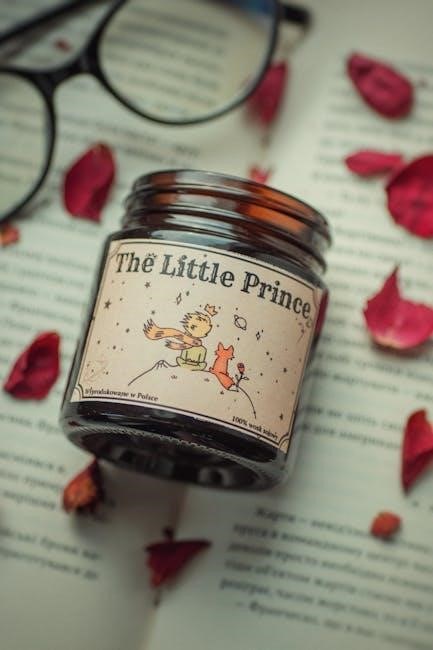
Themes and Moral Lessons
The story emphasizes diligence‚ responsibility‚ and preparation‚ contrasting with laziness and its consequences․ It teaches life lessons about hard work and the importance of planning for the future․
Diligence‚ Preparation‚ and Their Rewards
The story highlights the rewards of diligence through the third little pig‚ who carefully builds his house of bricks․ His hard work and preparation ensure his survival against the Big Bad Wolf․ In contrast‚ the first two pigs’ laziness leads to their downfall․ This moral lesson emphasizes the importance of effort and foresight․ The third pig’s success serves as a testament to the value of planning and perseverance․ The story teaches children that taking the time to do things right often leads to safety and prosperity․ These themes are reinforced in various PDF versions of the story‚ making it a valuable resource for educating young readers about responsibility and its benefits․
Laziness‚ Consequences‚ and Life Lessons
The story underscores the consequences of laziness through the first two pigs‚ who hastily build houses of straw and sticks․ Their lack of effort makes their homes vulnerable to the Big Bad Wolf’s attacks․ The destruction of their houses serves as a direct result of their shortcuts and complacency․ These events teach children that neglecting responsibilities can lead to dire outcomes․ The contrast between the lazy pigs and the diligent one emphasizes the importance of hard work․ This lesson is vividly illustrated in various PDF versions of the story‚ making it a powerful tool for teaching young readers about accountability and the importance of taking life’s challenges seriously․
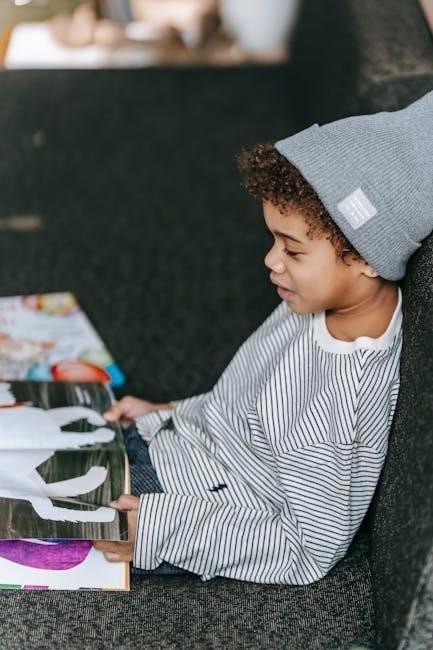
Educational Value of the Story
The Three Little Pigs story‚ available in PDF‚ teaches responsibility‚ preparation‚ and critical thinking while engaging young readers with its timeless lessons and interactive learning activities․

Teaching Children About Responsibility
The Three Little Pigs story serves as an excellent tool for teaching children about responsibility․ Available in PDF‚ the narrative emphasizes the importance of hard work and preparation․ The first two pigs‚ who build houses of straw and sticks‚ learn the hard way that shortcuts lead to failure․ In contrast‚ the third pig’s diligence in constructing a brick house ensures his safety․ This contrast helps children understand that responsibility involves making wise choices and putting in effort․ The story also highlights the consequences of laziness‚ reinforcing the idea that taking responsibility leads to better outcomes․ Parents and educators can use the PDF version to discuss these themes‚ encouraging children to reflect on their own behaviors and choices․ By engaging with the story‚ young readers develop a foundation for responsible decision-making․
Developing Critical Thinking Through the Story
The Three Little Pigs story encourages children to think critically by analyzing the characters’ decisions and their consequences․ The narrative prompts young readers to evaluate the pigs’ choices‚ such as building houses of straw or sticks‚ and consider the potential risks․ This fosters an understanding of cause-and-effect relationships․ The story also introduces problem-solving elements‚ as the pigs must outsmart the Big Bad Wolf․ By discussing the story‚ children can practice predicting outcomes and proposing alternative solutions‚ enhancing their analytical skills․ The PDF version of the story is particularly useful for classroom or home-based learning‚ as it allows for easy access to the text and its visual aids․ These elements collectively help children develop critical thinking abilities while engaging with a relatable and memorable tale․ The story’s structure makes it an ideal tool for fostering deeper comprehension and logical reasoning in young minds․
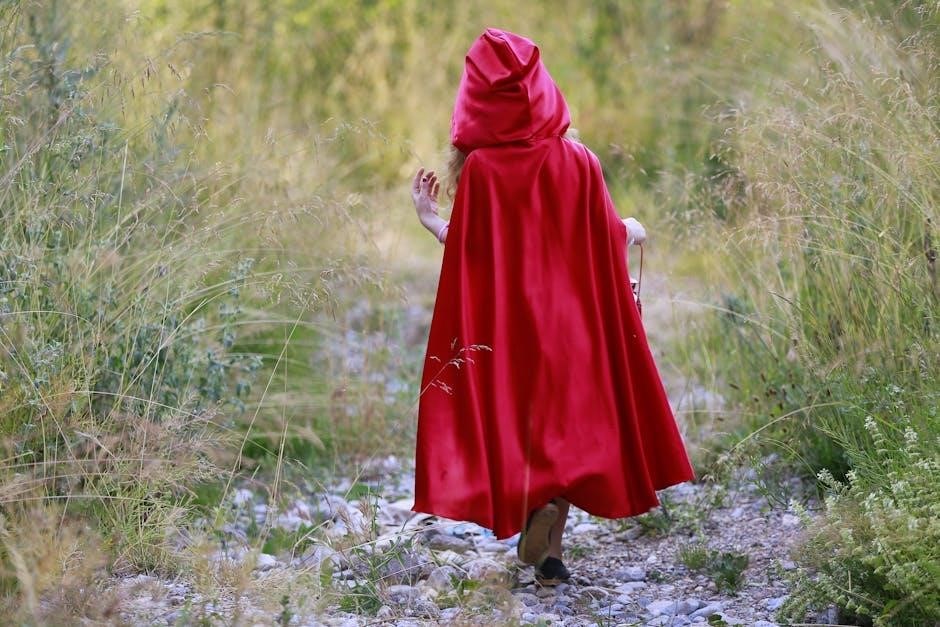
PDF Downloads and Resources
Find the Three Little Pigs story in PDF format for free‚ including versions like The True Story of the Three Little Pigs and Three Little Pigs ⎼ Book․pdf‚ available online․
Where to Find the Three Little Pigs Story in PDF
The Three Little Pigs story is widely available in PDF format for free download․ Popular platforms like Scribd‚ Google Drive‚ and educational websites offer versions such as The True Story of the Three Little Pigs and Three Little Pigs ⎼ Book․pdf․ Additionally‚ websites like Teachers Pay Teachers and children’s storytelling platforms provide downloadable PDFs‚ often accompanied by illustrations and activities․ Some versions‚ like Three Little Pigs_Level 1․pdf‚ are designed for emergent readers‚ making them ideal for young learners․ Audio versions‚ such as The Three Little Pigs, Audio․mp3‚ are also available to complement the reading experience․ These resources are easily accessible and can be downloaded in minutes‚ offering a convenient way to enjoy or teach the story․
Benefits of Using PDF Versions for Learning
PDF versions of the Three Little Pigs story offer numerous benefits for learning․ They provide a consistent and clear layout‚ making it easier for children to follow the narrative․ Interactive elements like clickable pages and zoom features enhance readability․ PDFs are also portable‚ allowing access on various devices such as tablets‚ smartphones‚ and computers․ This versatility is ideal for both classroom use and home learning․ Additionally‚ PDFs often include engaging visuals and illustrations‚ which help younger readers connect with the story․ Some versions even come with accompanying audio‚ enabling a multisensory learning experience․ Parents and educators can easily print PDFs for offline activities or use them in digital whiteboard sessions․ Overall‚ PDFs make learning the Three Little Pigs story accessible‚ engaging‚ and adaptable to different learning environments․

Story Illustrations and Visuals
The Three Little Pigs story is enriched by vibrant illustrations‚ showcasing the pigs’ houses and the Big Bad Wolf․ Famous illustrators like Wassily Kandinsky have added unique artistic interpretations‚ while PDF versions often include detailed visuals and coloring pages for children and adults alike‚ enhancing the storytelling experience․
The Role of Illustrations in Enhancing the Story
Illustrations play a vital role in bringing the Three Little Pigs story to life‚ making it more engaging for young readers․ Vibrant visuals of the pigs’ houses‚ the Big Bad Wolf‚ and the dramatic huffing-and-puffing scenes captivate children’s imaginations․ The artwork helps children visualize the characters’ emotions and the progression of the plot․ In PDF versions‚ detailed illustrations are often included‚ offering a visually appealing experience that complements the narrative․ Additionally‚ coloring pages and creative designs encourage interactive learning‚ allowing children to express their own interpretations of the story․ The visual elements not only enhance comprehension but also make the tale more memorable and enjoyable for readers of all ages․ This synergy between text and images ensures the story remains a timeless favorite in both digital and print formats․
Famous Illustrators and Their Interpretations
The Three Little Pigs story has been brought to life by renowned illustrators‚ each offering unique interpretations․ One notable example is the work of Wassily Kandinsky‚ whose abstract style transforms the pigs’ houses into vibrant‚ geometric shapes‚ adding a modern artistic twist․ Another famous illustrator is Arthur Rackham‚ known for his classic‚ detailed depictions of the Big Bad Wolf and the pigs’ homes‚ which emphasize the story’s dramatic tension․ Additionally‚ contemporary illustrators like Christian Robinson have reimagined the tale with minimalist designs‚ making it visually appealing to younger audiences․ These interpretations not only enhance the story’s visual appeal but also provide fresh perspectives‚ keeping the narrative engaging for new generations․ Their work is often featured in PDF versions of the story‚ allowing readers to enjoy both the timeless tale and its artistic evolution;

Cultural and Social Impact
The Three Little Pigs story has deeply influenced culture‚ inspiring countless adaptations in media‚ literature‚ and education․ Its timeless lessons on preparation and perseverance continue to resonate globally‚ making it a universal favorite․
Modern Adaptations and Interpretations
The story of the Three Little Pigs has been reimagined in various modern formats‚ including animated films‚ stage plays‚ and digital adaptations․ Its timeless themes resonate across cultures‚ making it a favorite in educational resources like PDFs․ The tale has also inspired artistic interpretations‚ such as illustrations in the style of Wassily Kandinsky‚ blending traditional storytelling with contemporary art․ Additionally‚ the story appears in coloring books and activity sheets‚ engaging both children and adults․ Its versatility allows it to adapt to new mediums while retaining its core message‚ ensuring its relevance in today’s world․
References in Popular Culture and Media
The Three Little Pigs have become cultural icons‚ appearing in various forms of media beyond traditional storytelling․ They are featured in cartoons‚ such as Masha and the Bear‚ and referenced in films and TV shows․ The story’s characters and plot are often parodied or reinterpreted‚ making them instantly recognizable․ In music and advertising‚ the pigs and the Big Bad Wolf are used as symbols‚ reinforcing their universal appeal․ Their presence in educational materials‚ including PDFs‚ ensures their story continues to influence new generations․ This widespread presence highlights the tale’s enduring impact on popular culture‚ making it a shared cultural touchstone across different mediums and audiences․
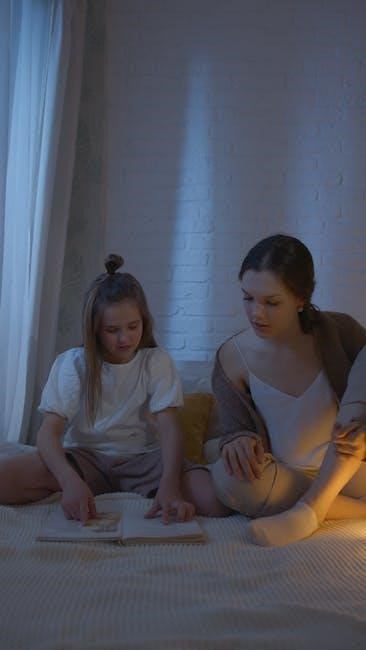
Activities for Kids
Engage kids with coloring pages and DIY crafts inspired by the Three Little Pigs․ Interactive reading exercises and math activities enhance learning‚ while story-themed DIY projects foster creativity and fun․
DIY Crafts Inspired by the Story
Engage kids with creative DIY crafts inspired by the Three Little Pigs․ Build houses using straw‚ sticks‚ and bricks with craft materials‚ teaching about materials’ strength․ Create pig masks or wolf puppets for role-playing․ Design story-themed coloring pages or collages․ These activities foster creativity and deepen understanding of the tale․ Kids can also craft story sequencing cards to retell the plot․ Additionally‚ make paper bag puppets of the characters for puppet shows․ These hands-on projects make learning fun and interactive‚ encouraging imaginative play and storytelling skills․ They also help children visualize the story’s key events and characters․ DIY crafts are a great way to extend the story’s educational value and entertainment for young learners․
Discussion Questions to Engage Young Readers
Encourage young readers to think deeply about the story with engaging discussion questions․ Ask why the first two pigs chose weaker materials and the third pig opted for bricks․ Discuss the Big Bad Wolf’s motivations and whether his actions were justified․ Explore the moral lessons about diligence and laziness․ Inquire how the pigs felt when their houses were destroyed and how they supported each other․ Invite reflections on what the story teaches about responsibility and preparation․ Question what the pigs could have done differently and how the story might change if the wolf succeeded․ These questions foster critical thinking‚ empathy‚ and a better understanding of the story’s themes․ They also encourage creative reinterpretations and applications of the story’s moral lessons in real-life situations‚ making the tale more relatable and impactful for young minds․
The story of the Three Little Pigs remains a timeless tale‚ teaching lessons about preparation and consequences․ Its enduring appeal lies in its simplicity and universal moral themes‚ making it a cherished resource for learning and enjoyment․
Final Thoughts on the Timeless Appeal
The story of the Three Little Pigs continues to captivate audiences with its enduring themes of preparation‚ responsibility‚ and consequences․ Available in various PDF formats‚ it remains a versatile resource for both entertainment and education․ The tale’s simplicity and moral lessons make it accessible to children of all ages‚ while its rich imagery and engaging storyline ensure it stays memorable․ The availability of illustrations and supplementary materials like discussion questions and crafts enhances its educational value․ As a result‚ the Three Little Pigs story remains a timeless classic‚ offering timeless wisdom and enjoyment for generations to come․
Encouraging Further Exploration of the Story
Exploring the Three Little Pigs story through its various PDF versions offers a wealth of opportunities for deeper engagement․ Parents and educators can use these resources to create interactive learning experiences‚ such as reading aloud‚ discussing moral lessons‚ and completing related activities․ The story’s themes of preparation and responsibility can spark meaningful conversations about life skills․ Additionally‚ the availability of illustrations and supplementary materials like coloring pages‚ crafts‚ and discussion guides makes it easy to extend learning beyond the story itself․ Encouraging children to think critically about the characters’ choices and the story’s outcomes fosters creativity and understanding․ By leveraging the PDF format‚ users can access these tools anytime‚ making the Three Little Pigs a versatile and enduring educational resource for young minds․
